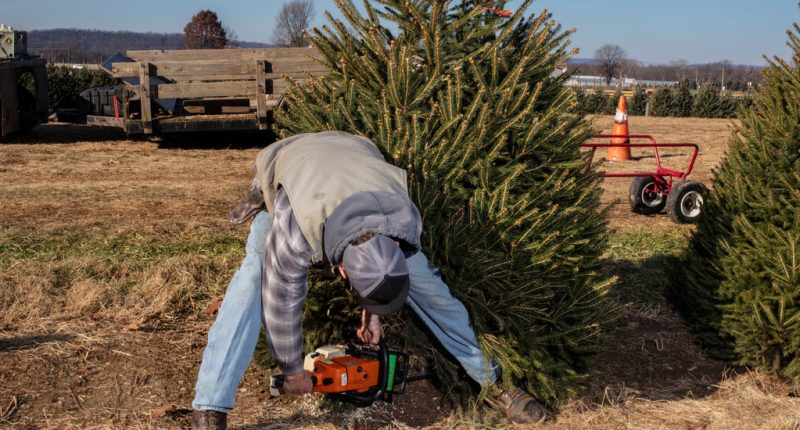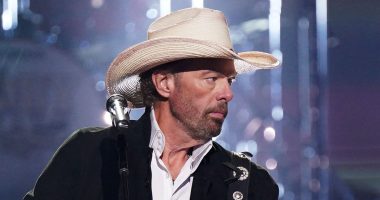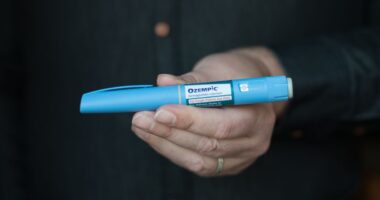
Every day since the trees were planted has been a roll of the dice.
Unlike commodities like corn and soybeans, which Mr. Wyckoff grows on another 90 acres he owns, there is no good way to insure Christmas trees against the harm caused by extreme weather, or the effects of an overseas war or a pandemic that freezes supply chains, he added.
“Farmers are the biggest gamblers there are,” Mr. Wyckoff, 57, said. His family has been growing Christmas trees in Belvidere, N.J., about a 90-minute drive from Midtown Manhattan, since his grandfather started the business in the 1950s.
Christmas trees grow slowly, about 12 to 14 inches a year, and can take 10 years to go from seed to harvest. Most trees he plants are 3 to 5 years old by the time he buys them from nurseries.
To keep up with costs, Mr. Wyckoff raised the price of his trees this year to $15 a foot, or $105 for a seven-foot tree, up from $14 a foot last year. A decade ago, similar trees sold for $10 a foot, he said. The trees he sells include the popular Fraser fir, the Norway Spruce and the Canaan and Douglas firs.
Despite the risks, the trees remain Mr. Wyckoff’s most profitable crop. He expects to sell 7,000 this year, up from 5,000 last year.
“We’re currently in a boom period,” said Tim O’Connor, the executive director of the National Christmas Tree Association. Supply was tight before the pandemic, and then demand soared for trees customers could pick and cut themselves outdoors.
Nationally, there were 15,000 Christmas tree farms with sales of over $376 million in 2017, according to the latest available federal data. Bert Cregg, a horticulture professor at Michigan State University and industry expert, said farmers can make a 50 percent profit on each tree. Mr. Wyckoff said his profit was closer to 20 percent a tree.
Some costs have grown sharply for Wyckoff’s Christmas Tree Farm. Nearly all of Mr. Wyckoff’s equipment runs on diesel fuel; he paid $4.70 a gallon this year, up from $2.36 in 2018.
Climate change adds to the risk that he could lose huge swaths of trees. Of the 10,000 he planted this year, 5,500 were lost to drought and flooding. That cost him at least $27,500. In a typical year, he might lose 5 to 10 percent of his new trees.
The work is relentless. The farm has three full-time employees but a rotating cast of up to 40 seasonal workers during busy periods. Three large mowers ($20,000 each) cut down weeds every season, trees are pruned twice a year and pests and disease are monitored daily.
Mr. Wyckoff said he saved money by hiring high school students, getting help from local hunters and recruiting family members. His wife, Leslie, does accounting, his aunt Judy loves to mow and his 23-year-old son, Johnny, also works the farm.
The family’s trees have won awards in national competitions and have adorned the White House, Mr. Wyckoff said. The family has met Michelle Obama and former Vice President Mike Pence and his wife.
Although Mr. Wyckoff and industry experts have some concerns about the risk of another downturn if demand drops, business is good for now.
Hector Ruiz, 75, recently drove from Stuyvesant Town in Manhattan in search of a Fraser fir. He left with a tree shy of 5 feet tall. Most of the bigger ones were sold out.
“But I’m coming back for those trees right there,” he said, pointing to firs still in the ground and reserved for next year.
Produced by Eden Weingart, Andrew Hinderaker and Dagny Salas. Development by Gabriel Gianordoli and Aliza Aufrichtig.
Source: | This article originally belongs to Nytimes.com









